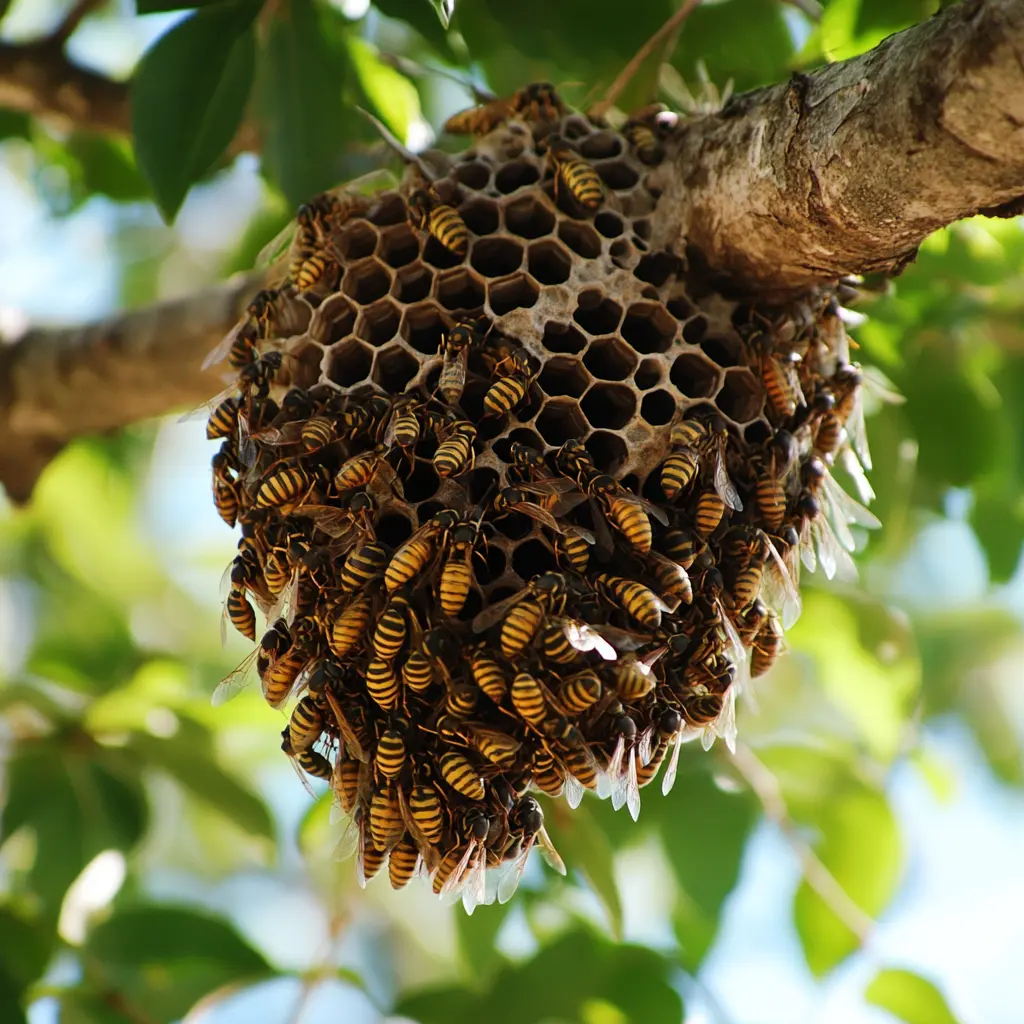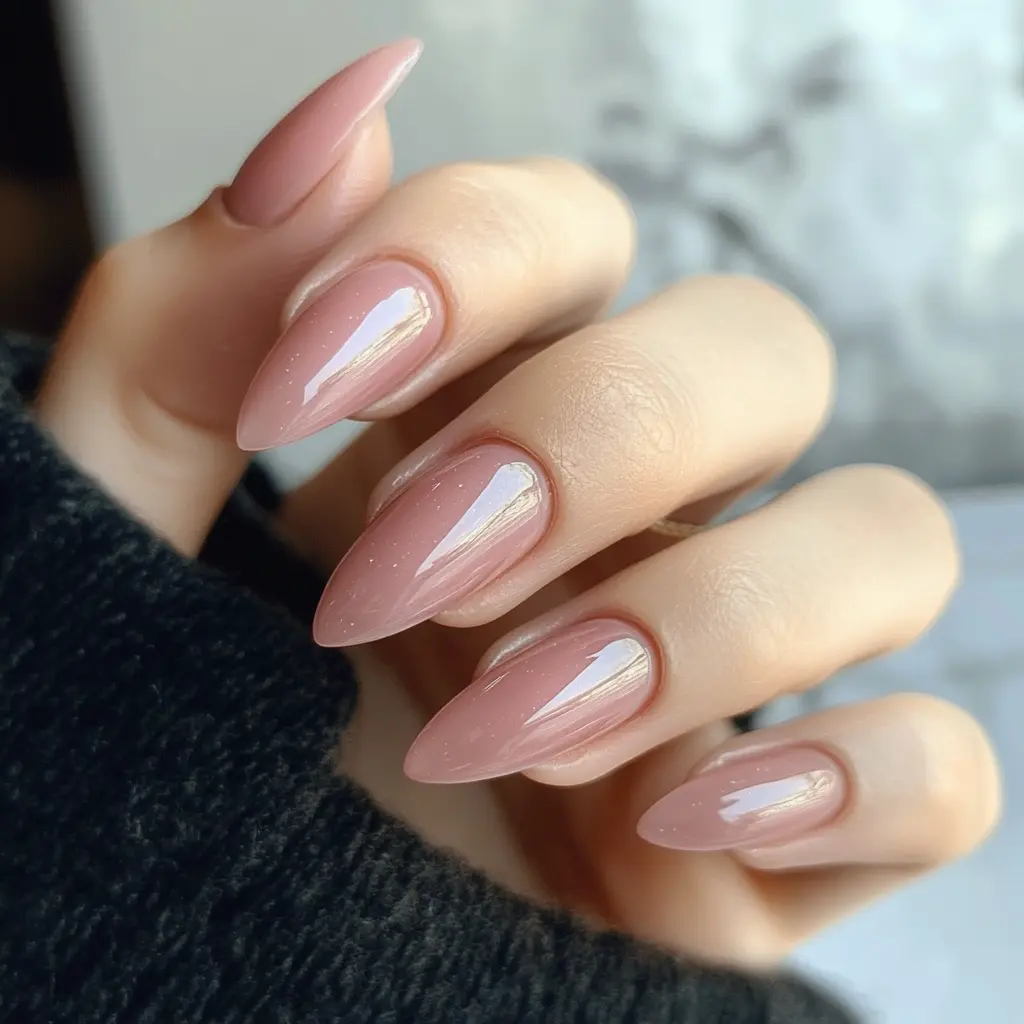
Getting rid of wasps can be a bit difficult, but it’s possible with the right way, and you can do it safely or effectively. Wasps can be aggressive if they feel frightened, so it’s important to handle the situation carefully. In this article, we’ll explain how to get rid of wasps and prevent them from coming back with easy-to-follow steps.
Identify the type of wasps
There are thousands of wasp species worldwide. According to Dr Jim Fredericks, PhD, Chief Entomologist at the National Pest Management Association (NPMA), the most common types you may find inside your home or around your property include:
- Paper wasps: Paper wasps, recognised for their long legs and abdomen, are either black or brown and often have yellow or brown striping. These wasps construct tiny, umbrella-like nests that dangle from eaves, tree limbs, or various other structures. Paper wasps tend to be very aggressive and will swarm if threatened.
- Yellow-Jackets: Yellow-jackets are small in size and similar like a honey bee. They have yellow bodies with black markings. They build nests in the ground. Within walls, or occasionally nestled in trees or shrubs. Yellow-jackets are also very aggressive and will swarm if threatened.
- Cuckoo Wasps: Cuckoo wasps are unique for shiny green colour and small size, cuckoo wasps are solitary insects (non-social) and mostly harmless.
- Hornets: Hornets are larger than other wasps, are brown and yellow stripes and build big, football-shaped nests in trees, or on the sides of the buildings. They typically show aggression only when they perceive a threat.
Determine if nest removal is necessary
If you have identified the type of wasps, decide if you really need to remove the nest. If the nest is far away from your home and does not disturb anyone, it could be best to leave it alone. Wasps play an important role in nature by controlling pests and pollinating plants. However, if the nest is near your home, in a high-traffic area, or somewhere people or pets might accidentally disturb it, then it’s a good idea to remove it.
Choose the right time to remove the nest
Wasps tend to be less active during the early morning, at night, and in cooler temperatures. This is the best time to approach a nest because the wasps will be inside the nest and less likely to be flying. Make sure to wear protective clothes including long sleeves, pants, gloves, and a hat to decrease the risk of getting stung.
Methods to get rid of wasps
1. Use a vinegar solution
Studies have shown that the acetic acid in vinegar is effective in killing wasps. Vinegar is widely available in grocery stores and also works as a natural cleaning agent.
To make a wasp spray:
- Mix 1 tablespoon of vinegar with 1 tablespoon of water.
- Stir well and pour the mixture into a spray bottle.
- Spray it directly on wasps or on hard surfaces where wasps are commonly found.
2. Use essential oils
Certain essential oils, such as peppermint, tea tree, and lemongrass, are proven to repel and kill wasps.
To make an essential oil spray:
- Mix a few drops of each essential oil with water and dish soap in a spray bottle.
- Spray the mixture around the exterior of your home, including roof edges, wall cracks, and areas where wasps tend to build nests.
- The mixture is safe to use on plants.
Essential oils are inexpensive and widely available in grocery stores, making this an effective natural solution.
3. Use a soap and water mixture
If you prefer a non-toxic approach, a simple soap and water mixture can eliminate small wasp nests.
To make the solution:
- Mix 2 tablespoons of dish soap with 1 tablespoon of water.
- Pour the solution into a spray bottle and shake well.
- Spray the nest directly. The soap clogs the wasps’ breathing pores, causing them to suffocate and die.
4. Try a commercial wasp spray
If you prefer a ready-made solution, store-bought wasp sprays are highly effective. These sprays are designed to kill wasps instantly and often come with long nozzles (up to 27 feet) to allow spraying from a safe distance.
- Wasp sprays are best used outdoors, such as in gardens or open fields.
- Avoid using them indoors as they have a strong chemical odour.
- Before spraying, cover your nose and ensure no people or pets are nearby.
- The best time to use wasp spray is at sunset when wasps are less active.
- Direct the spray towards the nest entrance first.
- The next day, check for activity. If wasps are still present, spray again.
Call a professional if needed
If you have a large wasp nest in your home, or if the nest is in a hard to reach place like inside a wall or high up in a tree, it is best to call a professional pest control service. Experienced professionals possess the skills and specialised tools needed to safely eliminate large or hard-to-reach nests.
Conclusion
Getting rid of wasps around your home requires a careful approach. Start by identifying the type of wasps and deciding if nest removal is necessary. If so, choose a safe method such as a natural spray or a commercial wasp spray, and always take precautions like wearing protective clothing and working in the early morning or evening when wasps are less active.
For large or difficult-to-reach nests, seeking professional help is the safest option. By following these steps, you can effectively remove wasps and prevent future infestations, keeping your home and garden safe.






